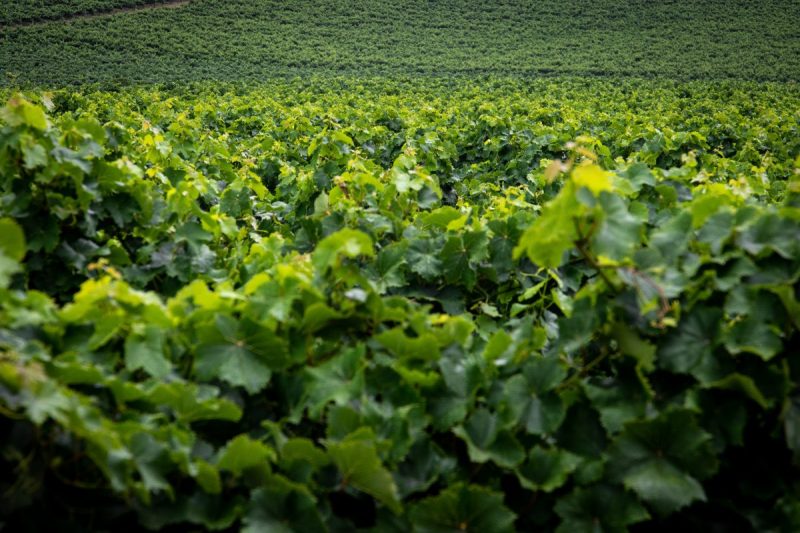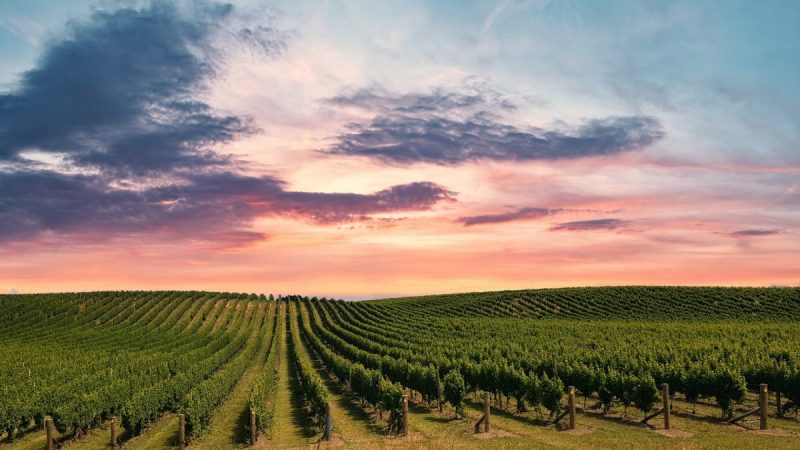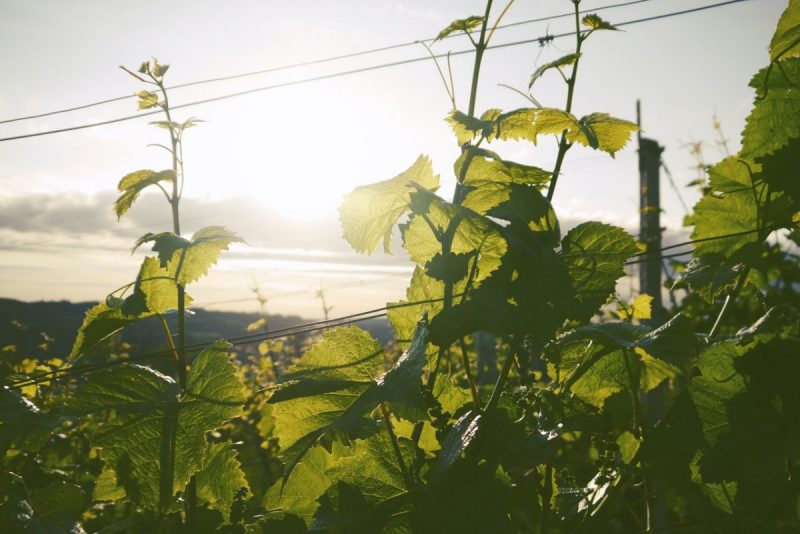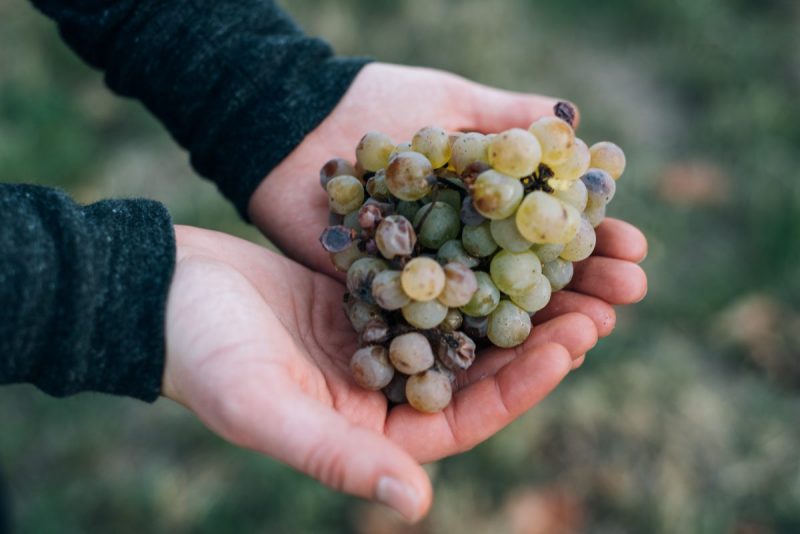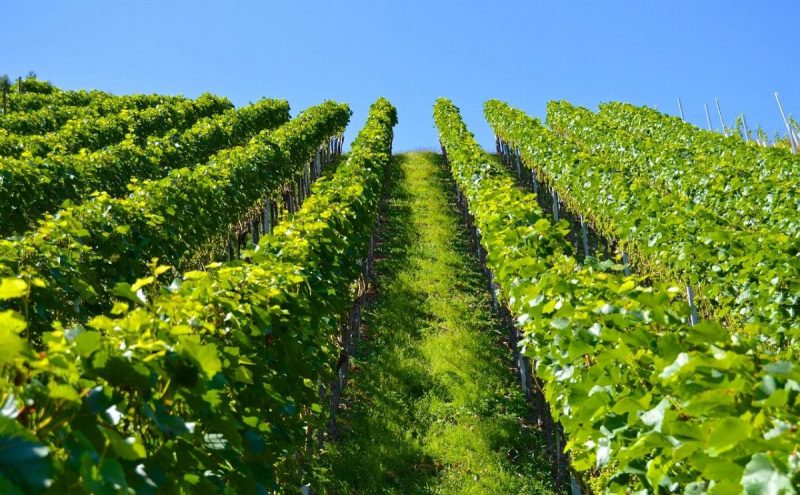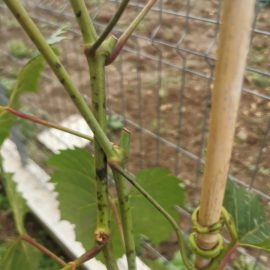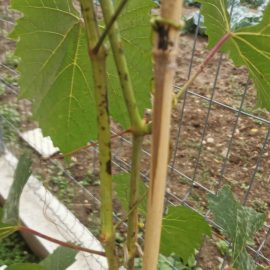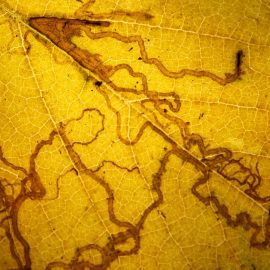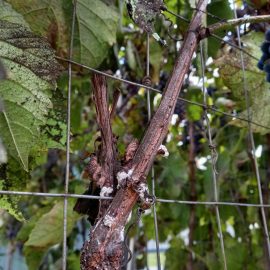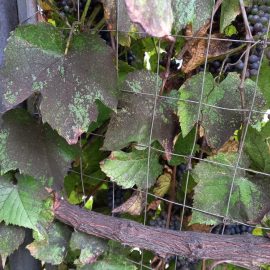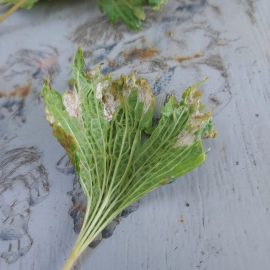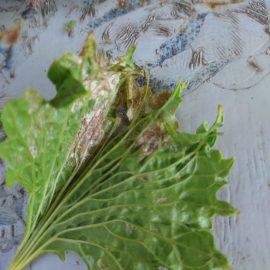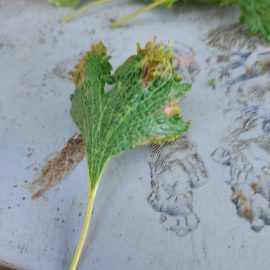Works in the first year (I) after planting the grapevine
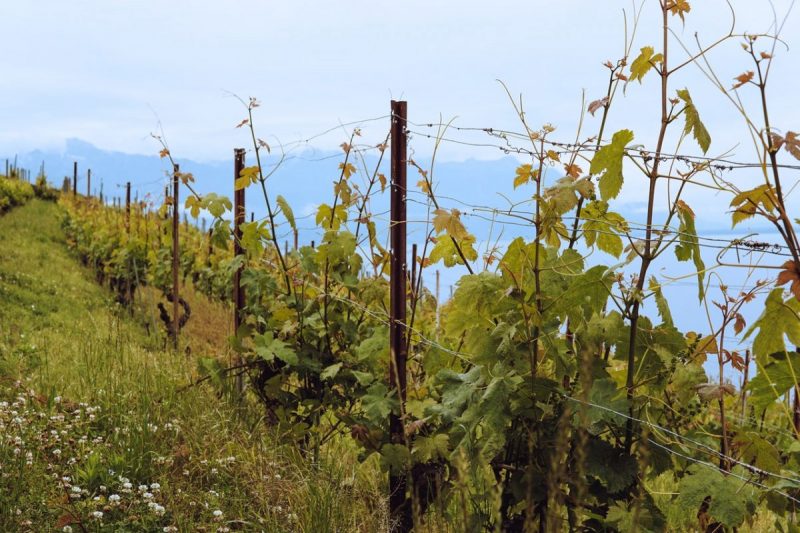
The works that are applied to the grapevines in the first year, as well as in the following years after planting (the first 3-4 years), are very important, as they influence a series of aspects. Thus, the plants will be more vigorous and more uniform, ensuring in the future a constant, high quality production, capitalizing to the maximum the potential of the chosen variety. The works from the first year are divided into two categories, respectively works that are applied to the soil and works directly on the grapevines.
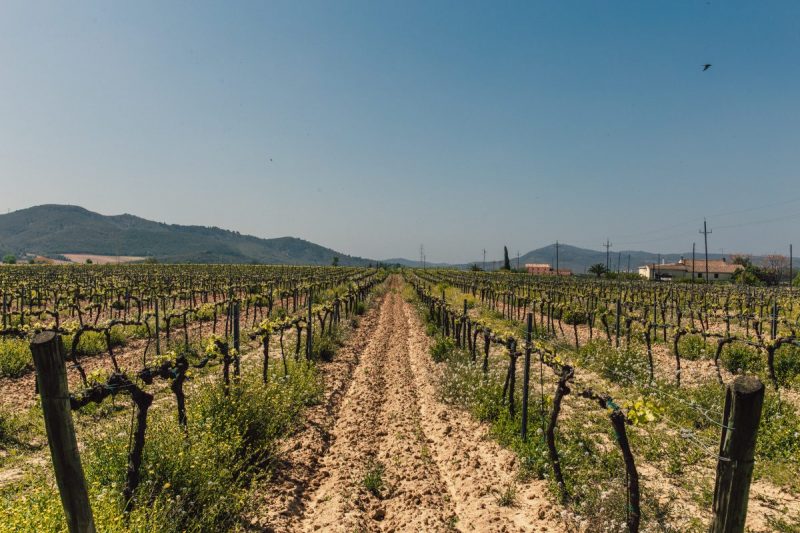
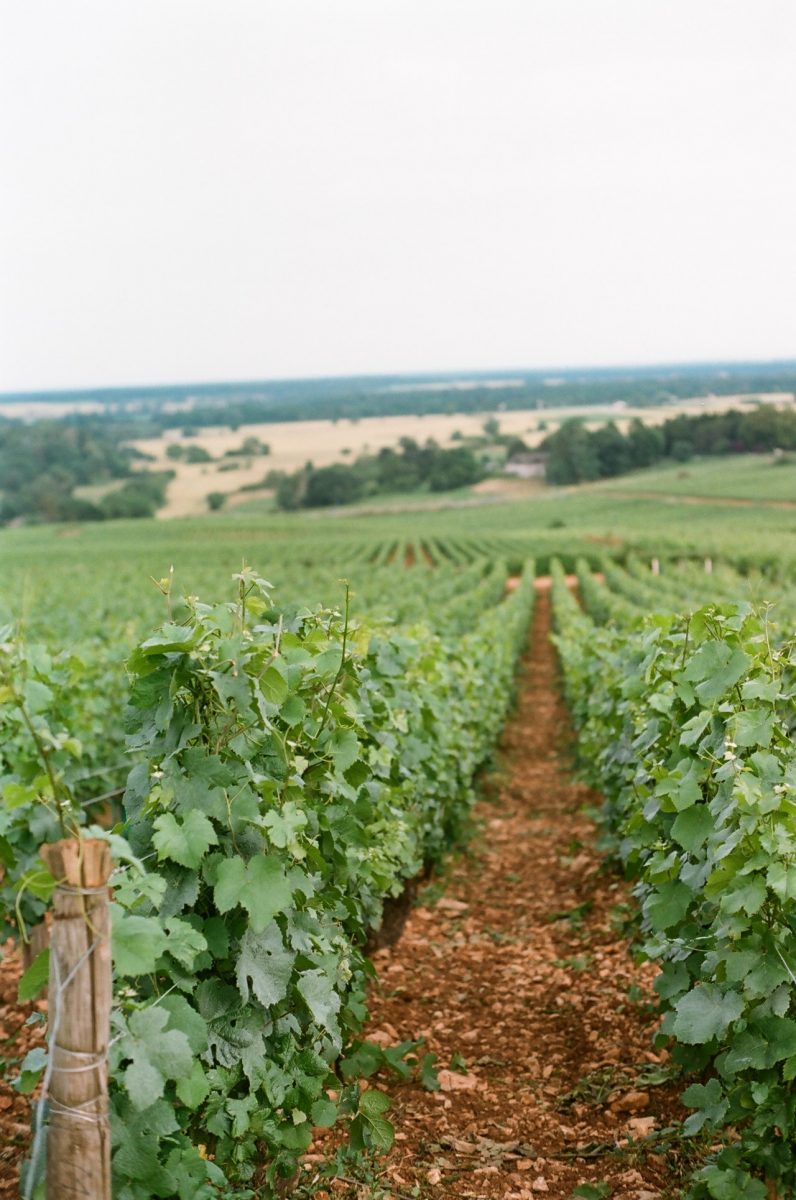
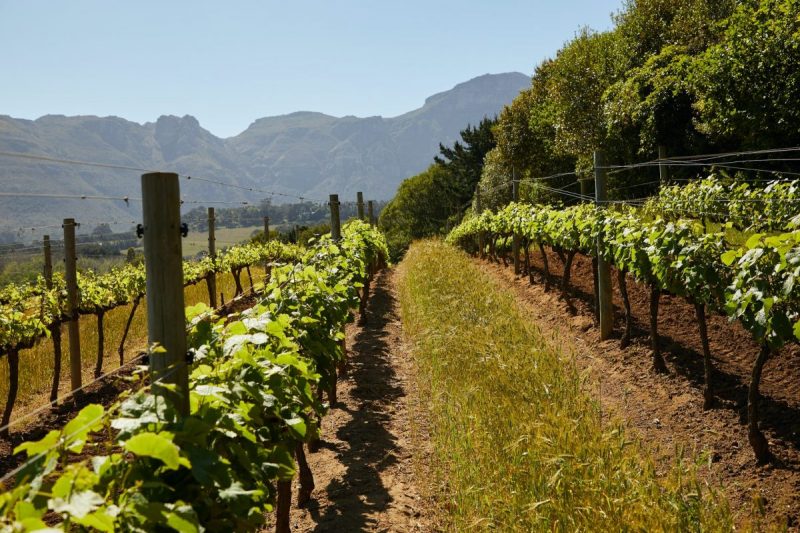
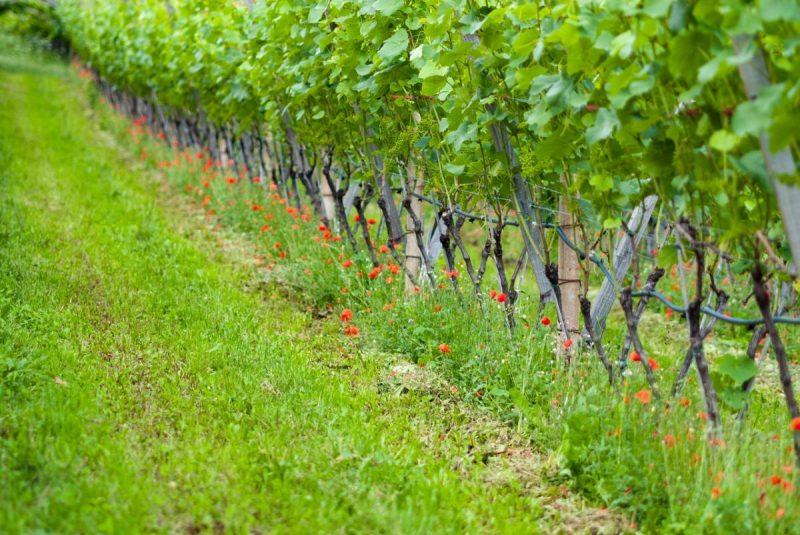
Soil works
They are carried out immediately after the planting, being represented by the loosening of the soil to a depth of 14-16 cm. During the vegetative growth period, in order to control weeds (as many species can occur), it is recommended to carry out 4 mechanical hoeings per space between the rows and 3 manual hoeings per row. At the same time, they have the role of improving the quality of the soil, favoring the permeability of air and water.
Irrigation. In case of long dry periods, a localized watering will be carried out for each grapevine (approximately 10 liters of water) or, in the case of the existence of an irrigation system, a norm of 350 – 400 m³ water/ ha will be used.
Fertilization. This work will be carried out, only if it has not been done beforehand, when preparing the land or planting.
Recommended products
-
You can find products on a different store
Change Store -
You can find products on a different store
Change Store -
You can find products on a different store
Change Store -
You can find products on a different store
Change Store -
You can find products on a different store
Change Store -
You can find products on a different store
Change Store -
You can find products on a different store
Change Store -
You can find products on a different store
Change Store -
You can find products on a different store
Change Store -
You can find products on a different store
Change Store -
You can find products on a different store
Change Store -
You can find products on a different store
Change Store -
You can find products on a different store
Change Store -
You can find products on a different store
Change Store -
You can find products on a different store
Change Store -
You can find products on a different store
Change Store -
You can find products on a different store
Change Store -
You can find products on a different store
Change Store -
You can find products on a different store
Change Store -
You can find products on a different store
Change Store -
You can find products on a different store
Change Store -
You can find products on a different store
Change Store -
You can find products on a different store
Change Store -
You can find products on a different store
Change Store
Recommendations:
- in the first year after planting, it is not usually recommended to apply fertilizers, due to the poorly developed root system of the grapevines. Thus, they will consume the fertilizers used in the planting holes;
- it is not recommended to use fertilizers with a high nitrogen content, because it prolongs the vegetative growth period and thus prevents the maturation of the wood;
- the use of complex fertilizers is recommended.
In the case of poor soils, to improve fruitfulness, the use of green fertilizers is also practiced. These are obtained by cultivating fast-growing species, using a rich vegetative mass or plants that synthesize the atmospheric nitrogen (legumes). Thus, you can opt for peas, or autumn vetch.
Recommended products
-
You can find products on a different store
Change Store -
You can find products on a different store
Change Store -
You can find products on a different store
Change Store -
You can find products on a different store
Change Store -
You can find products on a different store
Change Store -
You can find products on a different store
Change Store -
You can find products on a different store
Change Store -
You can find products on a different store
Change Store -
You can find products on a different store
Change Store -
You can find products on a different store
Change Store -
You can find products on a different store
Change Store -
You can find products on a different store
Change Store -
You can find products on a different store
Change Store -
You can find products on a different store
Change Store -
You can find products on a different store
Change Store -
You can find products on a different store
Change Store -
You can find products on a different store
Change Store -
You can find products on a different store
Change Store -
You can find products on a different store
Change Store -
You can find products on a different store
Change Store -
You can find products on a different store
Change Store -
You can find products on a different store
Change Store -
You can find products on a different store
Change Store -
You can find products on a different store
Change Store
Sowing is done in the first year, in autumn, and incorporation in the spring of the second year, when the plants are in the budding or earing phenophase.
This type of fertilizer has a number of advantages:
- It reduces erosion;
- It improves soil structure;
- It adds organic matter to the soil;
- It favorably influences the multiplication of microorganisms;
After the leaves fall, in autumn, a 16-18 cm plowing is carried out, the furrow being overturned towards the rows of grapevine, in order to lighten and protect the vine by mound layering.
Works carried on directly on the plants
Grapevine steering. If mound layering was carried out on the vines, during May and the beginning of June, periodic checks will be performed (2-3), by breaking the crust that has formed above the mound, in order to be able to observe the sprouting of the shoots. If the shoots did not appear on the surface of the mound, it will be broken down from the base to the top, below the grafting point.
Possible causes of delayed shoots:
- a crust that is too hard is formed due to snow or rain, which were followed by high temperatures. Thus, the shoots cannot penetrate through the respective crust, due to the formed resistance;
- the mound is too thick;
- lumps of dry soil are formed;
- the attack of the larvae of certain pests;
Measures that can be applied:
- Making the mounds smaller;
- Breaking down the mounds and rebuilding them with damp, well crushed soil;
- In case of larval attack, specific insecticides will be applied, according to the recommendations on the label.
Additionally:
- The mound will always be made with well-crushed soil, damp, and the grapevine will be covered with a 5 cm layer (even more in drought conditions);
- Mound layering is not necessary in the case of vines grafted with paraffin. In addition, in their case, we need to mention a series of advantages, such as the fact that the larval attack is reduced and the growth rate of the shoots is higher.
Cutting the roots. It is a mandatory work in the first year, which consists in removing the upper roots grown from the grafts, having the purpose of stimulating the development of the basal roots, as well as of the shoots starting from the rootstock. If this work is not carried out, the vine will form roots from the grafts, which are sensitive to frost, drought, phylloxera. Also, the link between the grafts and the rootstock depreciates until they come loose, the plants have a weak growth, which can eventually lead to the death of the grapevines and the appearance of gaps.
At the same time, the necessity of this work is given by the fact that it greatly influences the consolidation of young plants, being thus necessary for the realization of a homogeneous plantation.
Cutting the roots is carried out twice in the first year (June 15, when the mound is rebuilt and August 15) as follows:
- the mound is broken down until below the grafting point;
- a stitch will be made around the vine, until near the upper node of the rootstock, with the help of a special tool;
- with a sharp knife, cut all the roots sprouting from the grafts and from the topside of the rootstock as well as the shoots sprouting from the rootstock;
- the mound is rebuilt immediately after the first work, but, after the second, it will not be restored, in order to facilitate the maturation of the wood.
Shoot binding. It is carried out 1-2 times a year, when the shoots have a height of 40-60 cm. They are tied vertically on the picket, with a biodegradable material. The work is repeated when the shoots have reached 80 cm in length.
Weeding. This work consists in removing the extra shoots, being broken away right from the point of attachment. Thus, there will be only 3-4 shoots that have a better, vigorous position, which will fortify the plant and will later form the frame of the stump.
Thinning-out. It is the work that consists in removing the shoots formed in the axils of the leaves.
Top removal. Through this work, which is done in green, the top of the shoot will be removed, to stop the growth and to redistribute the reserve substances. It is recommended to be carried out in the phase when the shoots grow slower, more precisely, approximately around the 1st of September.
Controlling diseases and pests. Young vines are more susceptible to the attack of certain diseases (Peronosporales, powdery mildew), while the attack of pests occurs especially in the years when the climatic conditions are favorable for them. For control, it is recommended to carry out treatments with specific insecticides and fungicides, in accordance with the recommendations on the product label.
Recommended products
-
You can find products on a different store
Change Store -
You can find products on a different store
Change Store -
You can find products on a different store
Change Store -
You can find products on a different store
Change Store -
You can find products on a different store
Change Store -
You can find products on a different store
Change Store -
You can find products on a different store
Change Store -
You can find products on a different store
Change Store -
You can find products on a different store
Change Store -
You can find products on a different store
Change Store -
You can find products on a different store
Change Store -
You can find products on a different store
Change Store -
You can find products on a different store
Change Store -
You can find products on a different store
Change Store -
You can find products on a different store
Change Store -
You can find products on a different store
Change Store -
You can find products on a different store
Change Store -
You can find products on a different store
Change Store -
You can find products on a different store
Change Store -
You can find products on a different store
Change Store -
You can find products on a different store
Change Store -
You can find products on a different store
Change Store -
You can find products on a different store
Change Store -
You can find products on a different store
Change Store
Recommended products
-
You can find products on a different store
Change Store -
You can find products on a different store
Change Store -
You can find products on a different store
Change Store -
You can find products on a different store
Change Store -
You can find products on a different store
Change Store -
You can find products on a different store
Change Store -
You can find products on a different store
Change Store -
You can find products on a different store
Change Store -
You can find products on a different store
Change Store -
You can find products on a different store
Change Store -
You can find products on a different store
Change Store -
You can find products on a different store
Change Store -
You can find products on a different store
Change Store -
You can find products on a different store
Change Store -
You can find products on a different store
Change Store -
You can find products on a different store
Change Store -
You can find products on a different store
Change Store -
You can find products on a different store
Change Store -
You can find products on a different store
Change Store -
You can find products on a different store
Change Store -
You can find products on a different store
Change Store -
You can find products on a different store
Change Store -
You can find products on a different store
Change Store -
You can find products on a different store
Change Store
Identification of impurities. It is done in the second half of summer, either by cutting below the grafting point, or by painting.
Filling in the gaps. It is an important work in the first year, which aims to comply with the desired planting density and to obtain uniform, vigorous plantations, which can ensure constant productions, year after year. It will be done only with grapevine belonging to the same variety (rootstock) and biological category. It is done during the vegetative growth period or in the autumn of the first year.
Filling the gaps in summer is done with 1-year-old vines, which are grown in polyethylene bags, with a height of 20-24 cm and a diameter of 14-16 cm, provided with perforations. Planting is done in late August, early September, after the dry period or the danger of attack by certain pathogens passes. Filling the gaps in autumn, after the leaves fall, before the frost, will be done using grafted vine.
Protecting grapevines in winter
Regardless of the cultivation area, due to the low resistance of grapevine to winter frosts, in autumn, after the leaves fall, it is recommended to protect them, by mound layering, up to the level of the 4-6th mesh from the base of the vines. It is a mandatory work, because young vines are extremely sensitive to low winter temperatures. It is done manually, with a hoe, after the autumn plowing was carried out, using the soil that was loosened.
Maintaining the anti-erosion measures. If the plantation is set up on sloping lands, it will be necessary to maintain the taken anti-erosion measures, respectively the canals, terraces, roads, etc. Thus, the breakers are mowed and the parts degraded by torrential rains are repaired as soon as their appearance was noticed. The canals are unclogged and, if necessary, they are repaired, and the drains caused by the large water leaks will be covered using trodden earth.














































































































































































































































































































































































































































